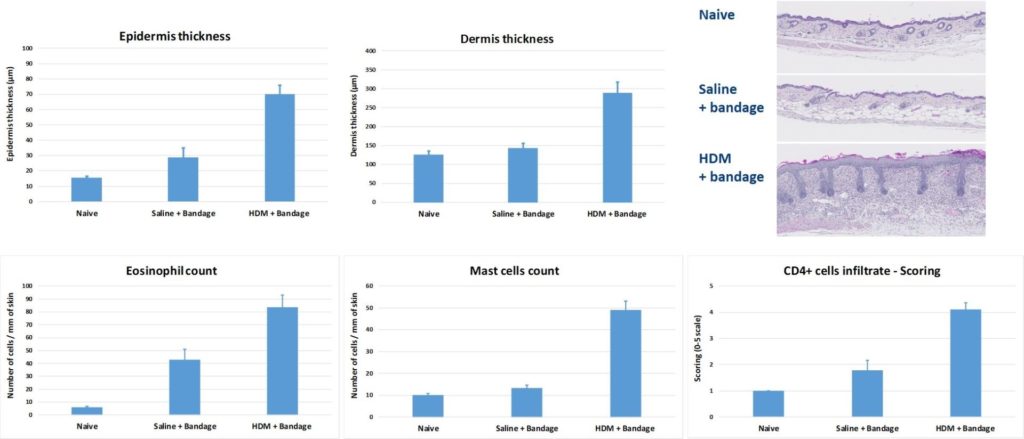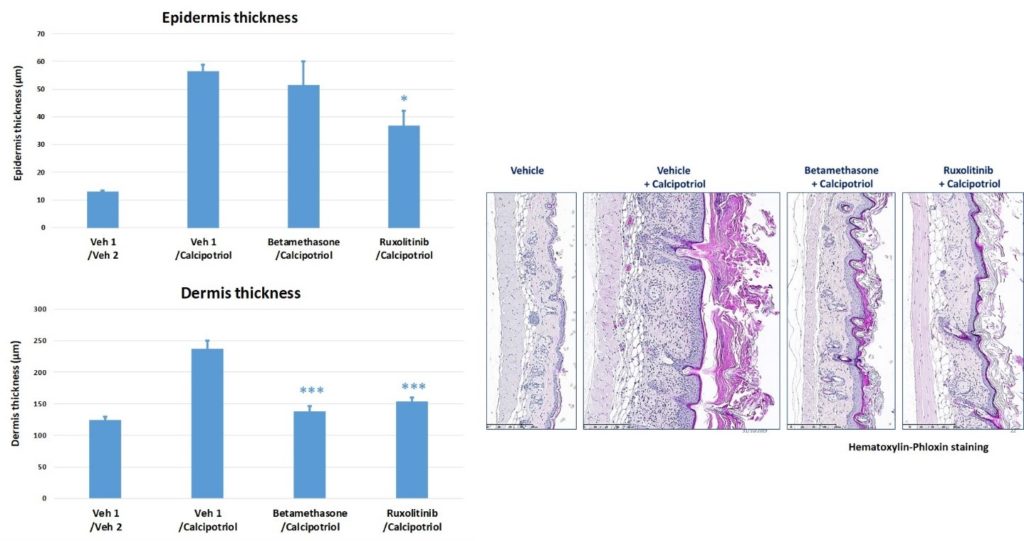
Preclinical CRO Services for Atopic dermatitis inflammation diseases
Atopic dermatitis (AD) is a chronic and relapsing inflammatory dermatitis characterized by pruritic and eczematous skin lesions. Developing treatments for atopic dermatitis involves the use of various models to study the underlying mechanisms and test potential therapeutic interventions.
Oncodesign Services offers access to several standard preclinical models addressing a variety of skin pathologies, including atopic dermatitis, and provides CRO support for de novo development of new skin inflammation models recently described in literature.
Typical readouts for skin inflammation
Clinical scoring
Real-time scratching
Histopathology
Biomarker/drug monitoring
Genomics
Discover our atopic dermatitis models
Oncodesign Services, a CRO specialized in Inflammatory Diseases Research, helps you to choose the best models to recapitulate the features of human atopic dermatitis and consider the ethical implications associated with animal research.
Our in vivo models bank includes:
- DNFB-induced model in mice
- HDM-induced model in mice
- Calcipotriol-induced model in mice
- (in development) Epicutaneous bacteria-induced model in mice
Combining different models and approaches enhances the translational relevance and robustness of preclinical research in atopic dermatitis drug development.
Case studies :
#1: House Dust Mite (HDM)-Atopic Dermatitis (AD) mouse model
Topical application of HDM to BALB/c mice induces epidermis and dermis thickening & recruitment of inflammatory cells (eosinophils, mast cells and CD4+ cells).
This model is useful for testing the efficacy of compounds targeting general skin inflammation. HDM are applied directly on the skin and the area is bandaged. The bandage is regularly replaced over the course of several weeks.

#2: Calcipotriol-induced atopic dermatitis in mice
Topical application of Calcipotriol to BALB/c mice (BID from D0 to D9) induces changes in skin morphology and inflammation, resembling immune perturbations observed in acute lesions of atopic dermatitis in patients.
Topical drugs showed protective effects on skin clinical score by reducing epidermis and dermis hyperplasia.
- Betamethasone (steroid anti-inflammatory drug)
- Ruxolinitib (JAK1/JAK2 inhibitor)


